Doppler effect
Red Shift

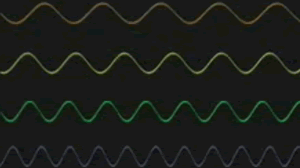
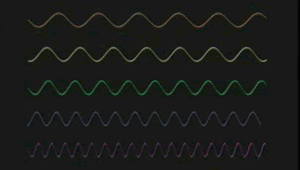

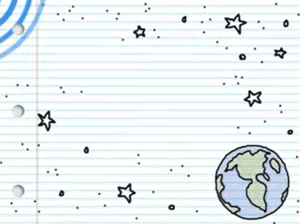
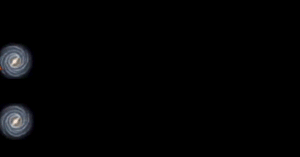
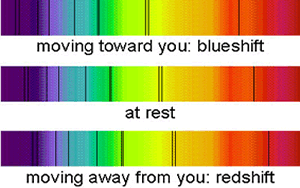
The movie clip on the left demonstrates the familiar Doppler effect with sound. We have all heard the Doppler effect but never realised it.
A high pitched sound is formed from high frequency waves whereas a low pitched sound is formed by low frequency waves. The type of sound is formed from the frequency while the loudness of the sound is determined by the amplitude, the height of the waves.
1) Explain using the words frequency and wave length, why the sound of a horn, mounted on top of a car, sounds high pitched as the car travels towards and observer and quickly fades to a dull low pitch sound as the car passes.
2) The image on the right shows two emission spectra. Emission spectrum A is that of hydrogen while spectrum B is that of a distant star.
a) The distant star is made of
b) The distant star is
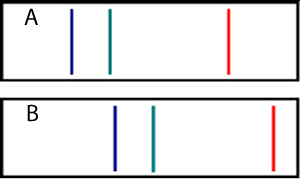
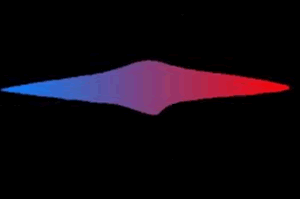
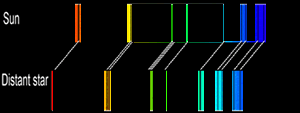
The Doppler Effect is used to find new planetary systems. When a planet orbits a star, the star doesn't really sit still. Actually the planet and star orbit about the center of gravity of the system, as shown on the right. Because the star is more massive than the planet, the center of gravity will be closer to the star than the planet. So, for the star-planet system, the star has an orbit of small radius and the planet has an orbit of larger radius. Astronomers talk about the motion of the star as a wobble and have been looking for many years for stars exhibiting this wobble as indicators of planetary systems.
The wobble is too small to be seen visually. To detect these massive planets, astronomers look for changes in the spectra coming from the star. For half of the stellar orbit, the star will be moving away from us and for the other half of the orbit, the star will be moving towards us increasing.
Shown on the right is the emission spectrum of the star without a wobble. Explain how the spectrum originating from the star will differ as it rotates about the centre of gravity.
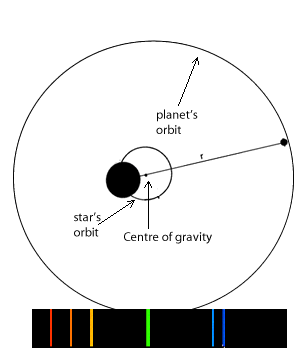
Astronomers use emission spectra to observe the presence of large mass objects such as binary star systems or black holes. By observing the effect on the emission spectrum of a star they can determine what is near it, even if the other object can not be seen. In a binary star system even if both stars cannot be seen we may be able to infer the presence of an unseen companion by its gravitational influence on the motion of the primary star.
Consider the image on the right it shows the spectrum changes of a binary system. The two stars orbit the center of mass, star A travels a small circle, and thus its velocity changes little. Star B travels a much bigger circle in the same amount of time! Its velocity changes quickly: so its RED-shifted or BLUE-shifted by a greater margin. The mass of the star influences its speed of orbit and of course the degree to which the spectrum is shifted. Form the spectral lines we can tell the speed of the star and therefore calculate its mass.
Which star, A or B, is more massive in this system?
What would happen if we were looking down on the stars, such that all their motion is perpendicular to our direction?
What would happen if both stars were the same size? How would we see the spectrum change?
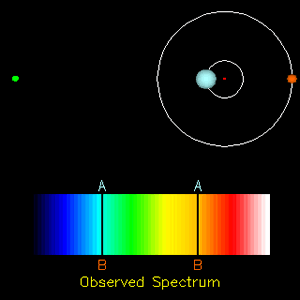
Consider the image on the right of a binary system where star A is significantly larger than B. Draw the spectral lines that form spectra X and Y.
Click for the solution.
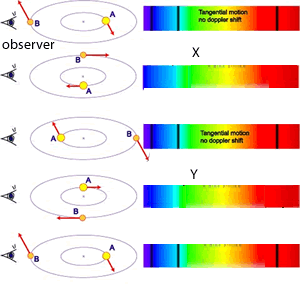
A buzzer is tied to a string and spun around as shown on the right. Although the buzzer produces a constant sound frequency the sound appears to be pulsating. Explain why.
As the buzzer spins around what does the person spinning the buzzer hear? Explain why